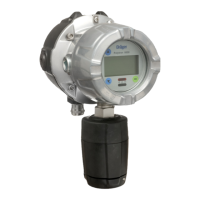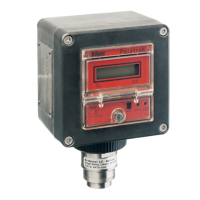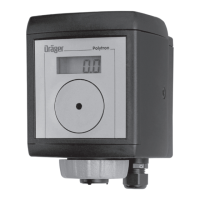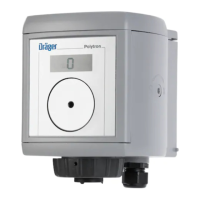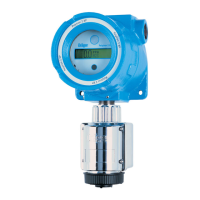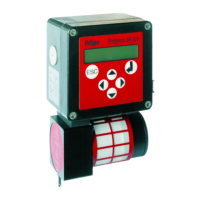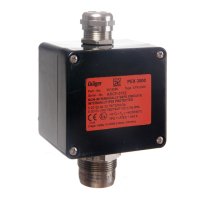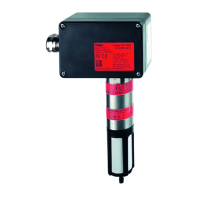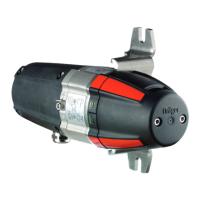20 Dräger Polytron 8100
Menu
Explanation of combining latching, acknowledgment and
pre-acknowledgment of alarms:
Since the concepts of latching and acknowledgment can be
confusing, the following six combinations are offered for
clarification:
Relay Test
These functions change the status of a relay and LED for test
purposes (e.g. to check the function of alarm devices connected
to the relay) and the symbol [ ] is displayed. After exiting this
function, the status of the relay and LED will automatically return
to their previous status.
Set alarm A1
Select Settings > Instrument > Alarm > Set alarm A1
and confirm.
Select Enable or Disable and confirm.
Set alarm A2
Select Settings > Instrument > Alarm > Set alarm A2
and confirm.
Select Enable or Disable and confirm.
Set fault
Select Settings > Instrument > Alarm > Set fault and
confirm.
Select Enable or Disable and confirm.
5.7.2 Passwords
These functions change the passwords for calibration (zero
and span calibration) and settings (access to all configuration
parameters).
Select Settings > Instrument > Passwords > Calibration
PWD or Settings PWD and confirm.
Select the line for editing the password and confirm.
Set the password and confirm.
The setting for the password is displayed.
Select Confirm and confirm with [OK].
5.7.3 Date and time
Select Settings > Instrument > Date and time and
confirm.
Select the line for editing the date or time and confirm.
Set each digit and confirm.
Select Confirm and confirm with [OK].
5.7.4 Language
Select Settings > Instrument > Language and confirm.
Select the language from the list and confirm.
Latching and
acknowledgeable
Relay must be reset manually and can
be reset before the alarm condition
clears.
Latching and non-
acknowledgeable
Relay must be reset manually. Relay
cannot be reset before the alarm
condition clears.
Latching and pre-
acknowledgeable
Relay must be reset manually. Relay
can be reset while the alarm condition
is still present but relay will not reset
until the alarm condition clears.
Non-latching and
acknowledgeable
Relay will reset automatically when
the alarm condition clears or can be
reset manually.
Non-latching and
non-
acknowledgeable
Relay will reset automatically when
the alarm condition clears. Relay
cannot be reset manually before the
alarm condition clears.
Non-latching and
pre-
acknowledgeable
Relay will reset automatically when
the alarm condition clears. Relay can
be reset while the alarm condition is
still present but relay will not rest until
the alarm condition clears.
NOTICE
For safe operation:
The relays must be set to “Normally energized” and
the A2 alarm (main alarm) must be set to “latching”
and “not acknowledgeable” or “pre-
acknowledgeable”.
The A1 alarm (pre alarm) may only be set to
“acknowledgeable” if it is used for triggering an
acoustic alarm device.
NOTICE
When the relays are activated, alarm devices will be
switched on.
NOTICE
If the function is activated, the fault relay is asserted and
the 4 to 20 mA interface is set to the fault current. The
yellow LED is lit, the symbol for maintenance is
shown [ ].
NOTICE
The correct date and time settings are important for
many functions.
i
i
i
i
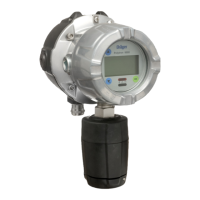
